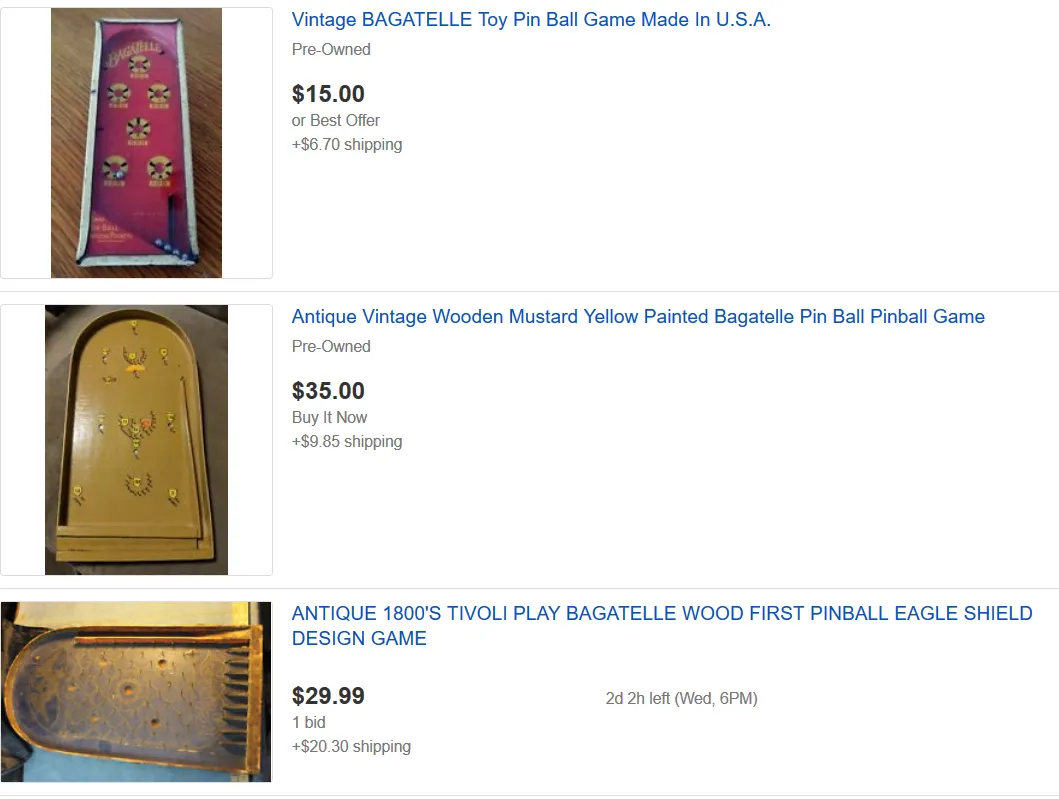
It all began with a rolling stone. In time, the stone became a ball. In an evolutionary sense, bocce and lawn billiards would be the first single celled organisms that began flagellating around in the primordial green soup of life. Croquet emerged, which involves hitting balls with a hammer, and that could have been your fish or amphibians. Golf emerged, which involves hitting balls with a club into holes in the ground, and that might be analogous to something like whales, which still exist today.
Billiards emerged, which involved moving the lawn game indoors, just as a mammalian ancestor emerged from the swamps to colonize dry land. Bowling was a cousin that also moved indoors when the weather outside was frightful. And bar billiards were a smaller version of the game, like a little frog that lost its tail. Bar billiards games varied greatly in their construction and rules, but often included holes on the table into which the balls could fall.
From there, it was a short evolutionary hop, skip, and jump to the ancestor of all mammals (or at least of pinned and doweled table games): Corinthian bagatelle. Believe it or not, this variant of bar billiards became extremely important in the evolutionary tree of gaming life. Pinball and pachinko both developed from this common ancestor; the similar bar billiards game called billiard japonais (actually developed in southern Germany, most likely) probably had some influence on the design as well.
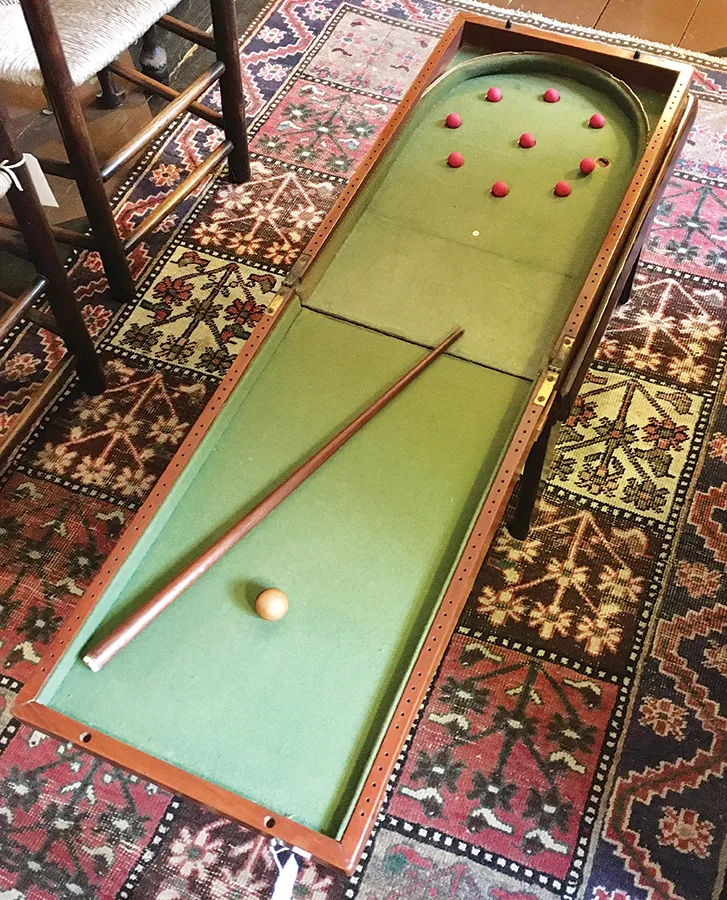
A bar billiards/bagatelle game. Source: yesterdaysisland.com.
In fact, there were so many variations of bar billiards that it’s hard to know which ones came first. Billiards probably originated in France, where it was played by aristocrats during the reign of Louis XIV. As with golf, it was a game for aristocrats, and maybe bar billiards were analogous to mini golf. The smaller bar billiards tables were less expensive, so probably more practical, and that may be one reason there were so many versions of the games. Let’s look at how bagatelle provided the foundation for modern-day pachinko and pinball.
Bagatelle: Not Another Shape of Pasta
When I first saw the word “bagatelle”, I thought it was another pasta shape from Italy. Farfalle, fusilli, cavatelli, fettucini, campanelle: those are real pasta shapes. Bagatelle is not a pasta shape; it’s a game. Apparently, even though its origins are French, its name came from the Italian word “bagatella”, which means ‘trifle’ or ‘decorative object’. It was named for the Chateau de Bagatelle, located within the city limits of modern day Paris, which began as a hunting lodge and a glorified playground, hence someone’s decision to use that Italian word for its name.

Chateau de Bagatelle in Paris. Source: Creative Commons via Wikipedia.com by Giraud Patrick.
In 1777, the Count of Artois held a party at the Chateau in honor of King Louis XVI and Queen Marie Antoinette. This was a few short years before the French Revolution; while the peasants were starving, the aristocracy was playing games. The party’s highlight was a new game, introduced for the first time, with a longer billiards table that was inclined, featuring ivory balls and a cue stick to hit the balls. The board was rounded at the top and, rather than having billiard-style pockets on the edges, featured holes in the board into which the balls should be hit.
Bagatelle boards became standardized to a length of around 6-10 feet and a width of 2-3 feet. Their popularity grew, not only in France, but elsewhere also. When General Lafayette and French soldiers travelled to the United States to help fight in its Revolutionary War, some brought their bagatelle tables along. Almost a century later, when Abraham Lincoln was campaigning to become president, a famous cartoon showed him playing a game of bagatelle against his campaign rival, George McClellan.
Corinthian Bagatelle and Early Pinball
Corinthian, a variation of bagatelle and of bar billiards, was the forerunner of the pachinko and pinball machines that would follow. There were pins or dowels on the board to mark the scoring areas and help guide the balls.
The small billiards cue stick was replaced eventually by a spring-loaded plunger. Pulling back the lever and releasing would launch a ball up and onto the playing board. The board was inclined, so that the force would take the ball up to the higher levels, eventually letting it fall due to the gravity of the inclined surface.

Ad for Corinthian games (1934).
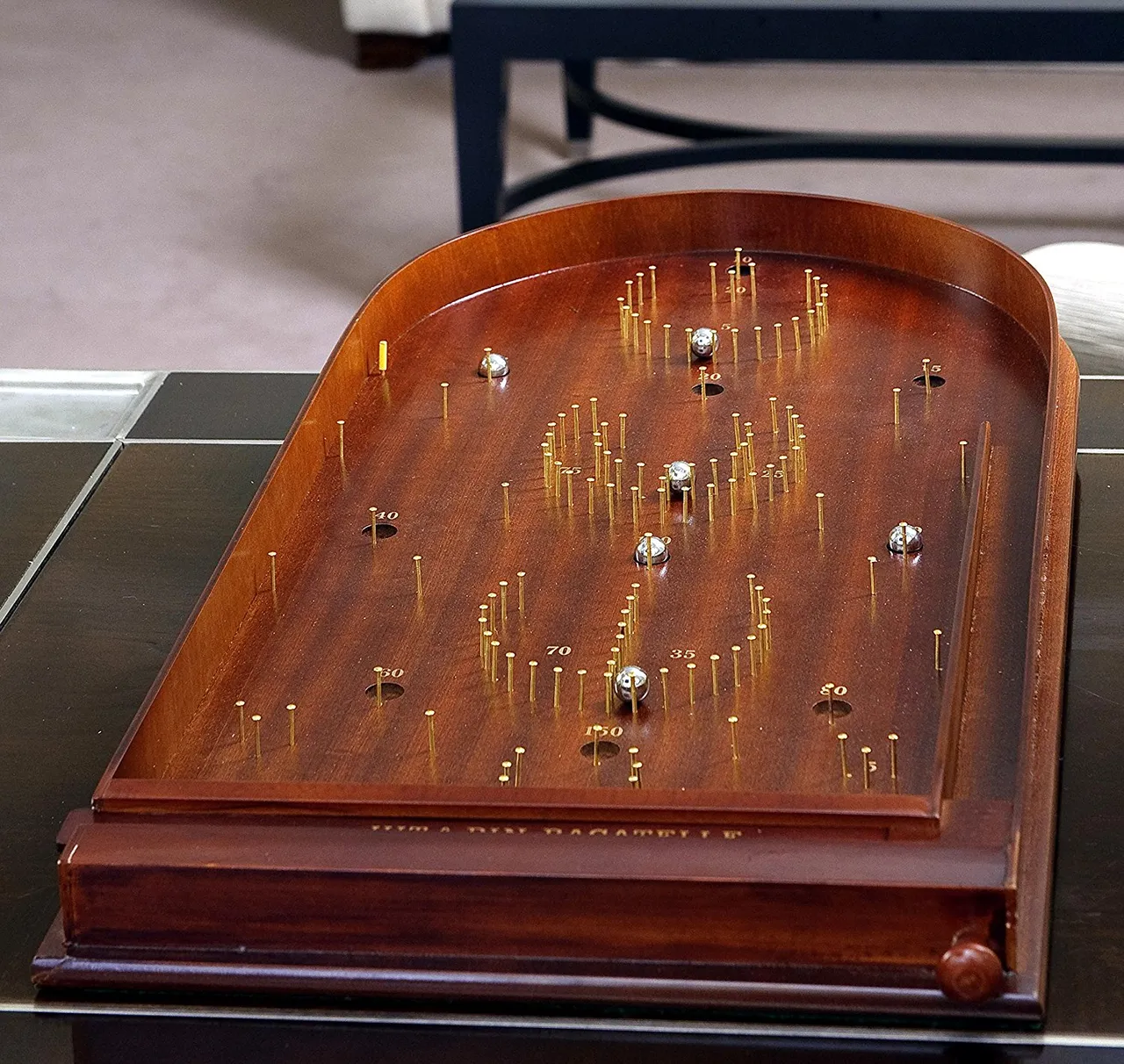
Corinthian Bagatelle game, still made today. This one is sold by Jaques of London via Amazon.co.uk.
The first patent for this device, called “Improvement in Bagatelles” was issued in 1871. The inventor was Montage Redgrave. He’d added the plunger/launcher and the inclined surface. He’d also made a smaller game that could be played with marbles as the balls.
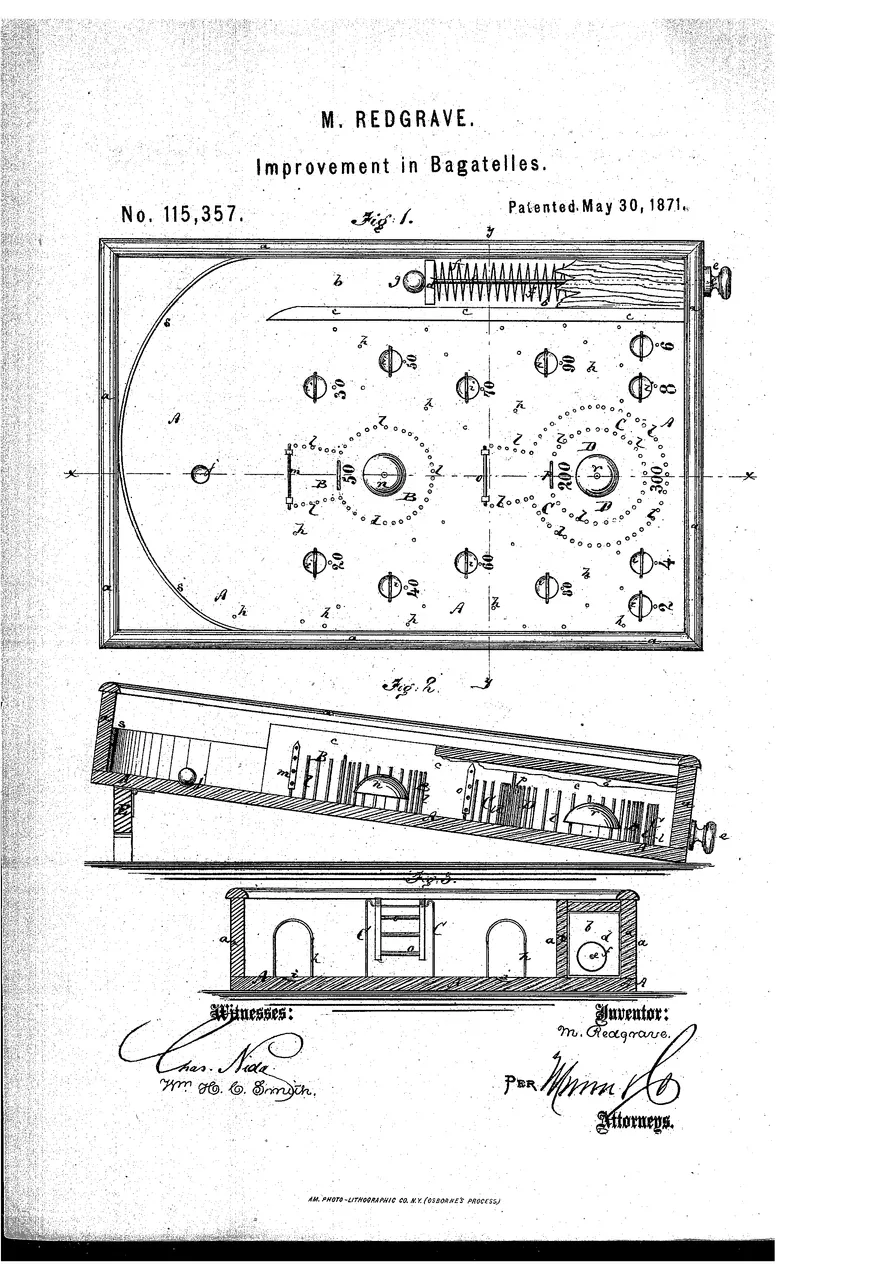
The Redgrave patent in 1871.
In 1931, the first true pinball machines were introduced. The first ones were called Bingo and Whiffle. These were known as “pin games”. They were followed closely by Baffle Ball, which had a baseball diamond theme to the scoring. Baffle Ball became so popular and sold so many units that the maker could not keep up with demand. It would be several more years before bumpers (1937) and active flippers (1947) were introduced to what were then being called “pin ball” games.
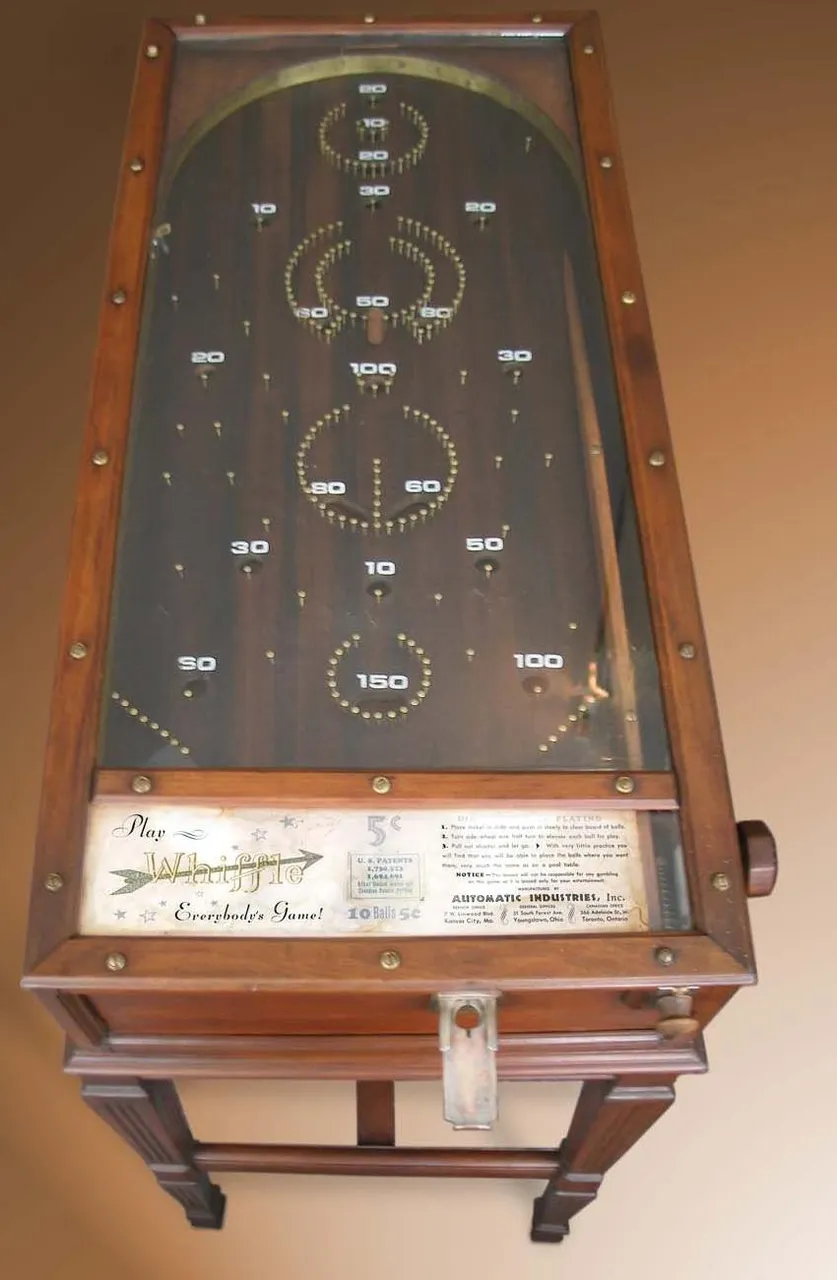
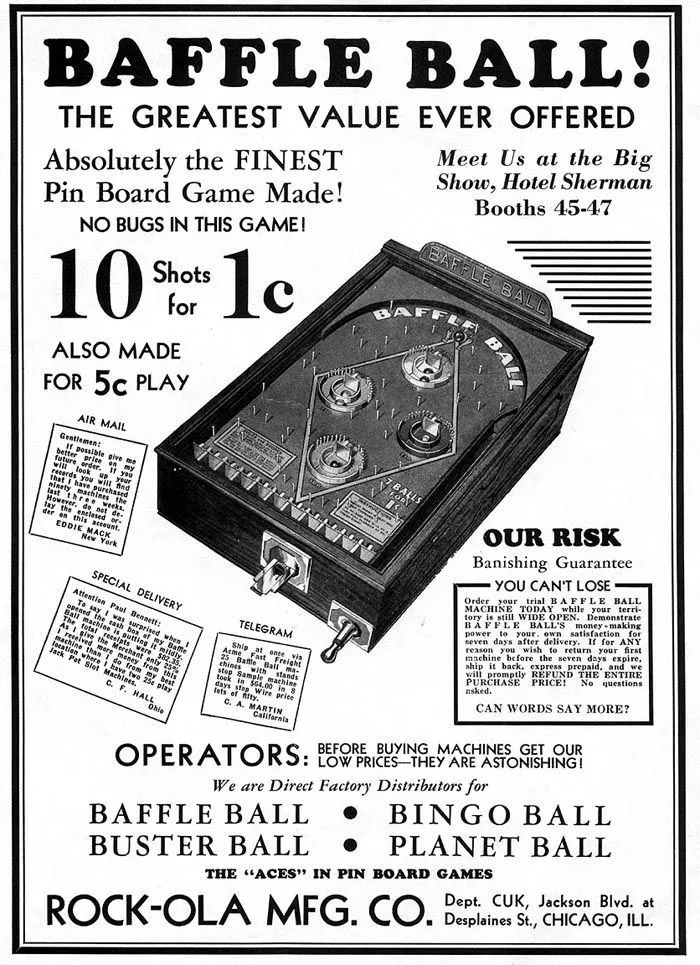
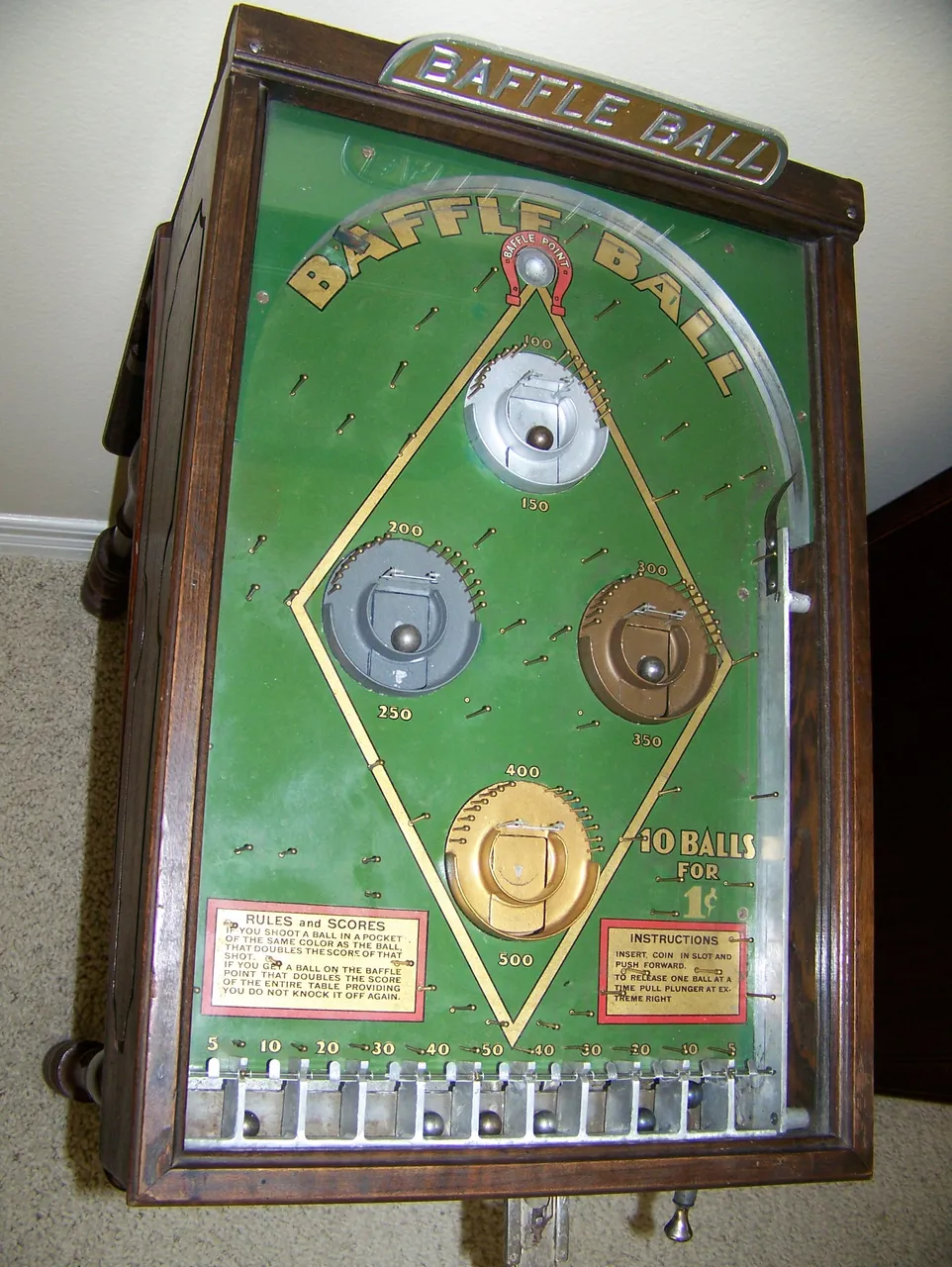
Whiffle and Baffle Ball games (1931). Top image is from pinrepair.com and bottom image is from pinballcollectorsresource.com.
You can look at these to see how much the game of pinball evolved.
The Pins of Pachinko
Popular in Japan, pachinko is both an arcade game and a gambling device. The game is similar to pinball. It is different in that the game is played with small steel balls; players can rent them by the box. While pinball balls stay inside the game, the pachinko balls can come out and be collected by the player for eventual redemption. In terms of its place in gambling, pachinko is similar to slot machines, though it also can be played recreationally.
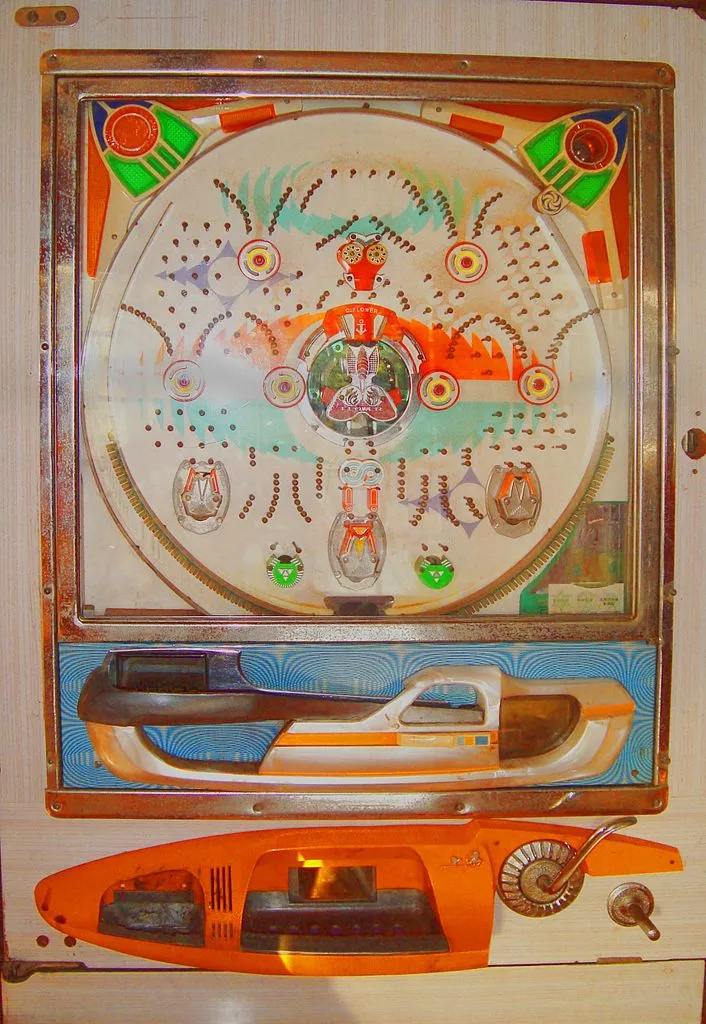
1970s mechanical pachinko game. Source: Creative Commons via wikimedia.com by fashionslide.
People Still Play Bagatelle and Its Variations
Personally, I think the opening for this post is one of the worst I have ever written. Feel free to tag me for #badwriting. But I’ll see this analogy through to the end. So the oldest mammal species on earth today is the opossum. These first appeared in the fossil record 75 million years ago. And the species, which is alive and well, is virtually unchanged from how it appeared then. Just as the old opossum still roams the earth, alongside mammal species that have developed further over these millions of years, so also do bar billiards and bagatelle games still exist alongside the latest entertainment.

Your great-grandmother was a giant rat! Just kidding. Here's an opossum (North America), the oldest mammal species on earth at 75 million years. It's not to be confused with all of the various "possums" from other parts of the world, since that word is used to describe several different critters, but all are related in some way. Source: Creative Commons via Wikipedia.com by Cody Pope.
There may be more modern games that offer more control (which make them much more fun also), but you still can find bagatelle and bar billiards games for sale. Even if modern mechanical games and computer games long ago became the more entertaining alternatives, it is great that people still honor these old games. Certainly, they deserve a place in any gaming museum for the important role they have played in the development of entertainment. As long as there are people who want to have fun, that stone will keep rolling.
Sources:
Bagatelle: https://en.wikipedia.org/wiki/Bagatelle
Bagatelle Rules: https://www.mastersofgames.com/rules/bagatelle-rules.htm
Development of Outdoor and Tabletop Ball Games: https://en.wikipedia.org/wiki/Pinball#Pre-modern:_Development_of_outdoor_and_tabletop_ball_games
Pachinko: https://en.wikipedia.org/wiki/Pachinko
Pasta dictionary: https://pastafits.org/pasta-dictionary/
History of Pinball: https://www.thoughtco.com/history-of-pinball-1992320
More on Pinball History: http://www.pinballhistory.com/pinfirsts.html
Top image: Screenshot of old bagatelle games from ebay.com.



